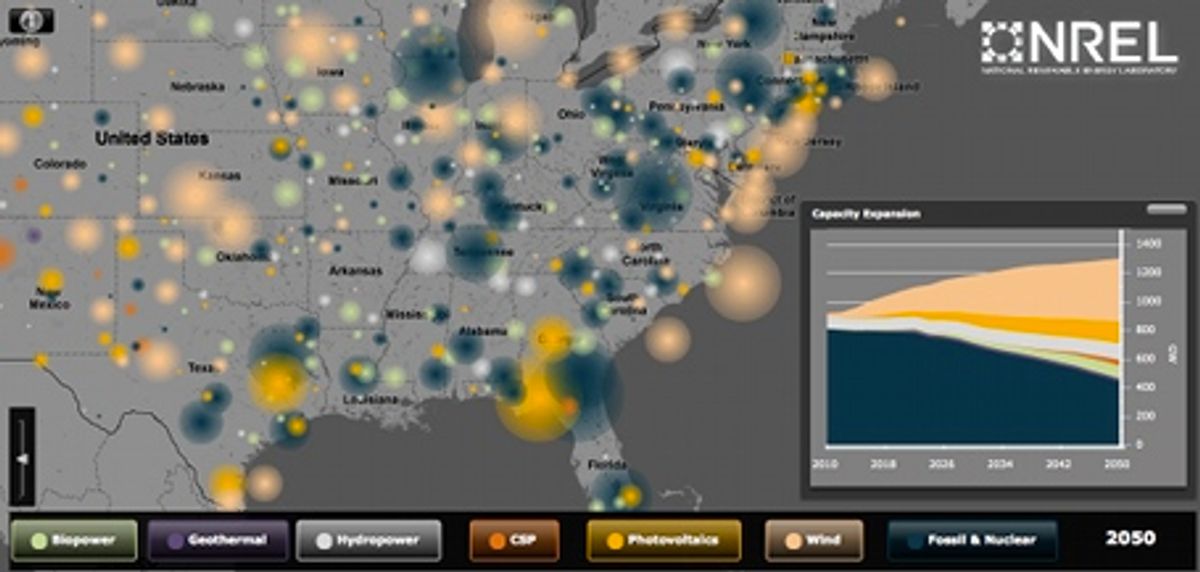A study published by the Department of Energy's National Renewable Energy Laboratory (NREL) found that renewable energy sources could "adequately supply" as much as 80 percent of electricity demand in 2050, using only the technologies that are commercially available today. Such technologies, NREL says in the Renewable Electricity Futures study, could provide balance between supply and demand for electricity on an hourly level.
This is a remarkable endorsement for deep integration of renewables, given the ongoing concerns about intermittency and storage for wind and solar power. And the NREL report went even farther, saying that fully 50 percent of electricity could come from "variable renewable generation" (wind and photovoltaics) without any blips in supply. The modeling NREL used suggested a growing role for offshore wind as total renewable supply increases—a not-insignificant assumption, of course, given the zero offshore turbines currently spinning in U.S. waters. The agency also saw a need for dedicated biomass power plants, as opposed to just feeding biomass to coal plants. Hydropower, meanwhile, which is currently the biggest renewable contributor, plays less and less of a role over the next few decades. (We have dammed pretty much every river we are going to dam.)
Also importantly, NREL found no major geographical gaps in the renewables map. "All regions of the United States could contribute substantial renewable electricity supply in 2050, consistent with their local renewable resource base." This is notable especially for regions like the Southeast, which so far has lagged far behind other areas in terms of renewables generation. Photovoltaic and biomass plants will play the biggest role in that region.
Of course, actually getting to an 80 percent renewables scenario by 2050 is a lot harder than simply saying the grid can handle it. From the report:
"Annual renewable capacity additions that enable high renewable generation are consistent with current global production capacities but are significantly higher than recent U.S. annual capacity additions for the technologies considered. No insurmountable long-term constraints to renewable electricity technology manufacturing capacity, materials supply, or labor availability were identified."
They may not be insurmountable, but the numbers are daunting nonetheless. Take wind, for example. The 80 percent scenario requires 439 gigawatts of installed wind capacity in 2050, only about 50 GW of which is currently installed. Can the United States build more than 10 GW per year—or between 2500 and 3000 turbines—for almost 40 years? Or the extensive transmission requirements to move that power? Or the 150 GW of photovoltaic panels needed? It all remains to be seen, but the NREL sign-off on renewables' ability to support the grid is big either way. The fossil fuel supporters who claim coal and natural gas will always be required to provide baseload power are standing on shakier ground all the time.
Image via NREL
Dave Levitan is the science writer for FactCheck.org, where he investigates the false and misleading claims about science that U.S. politicians occasionally make.




